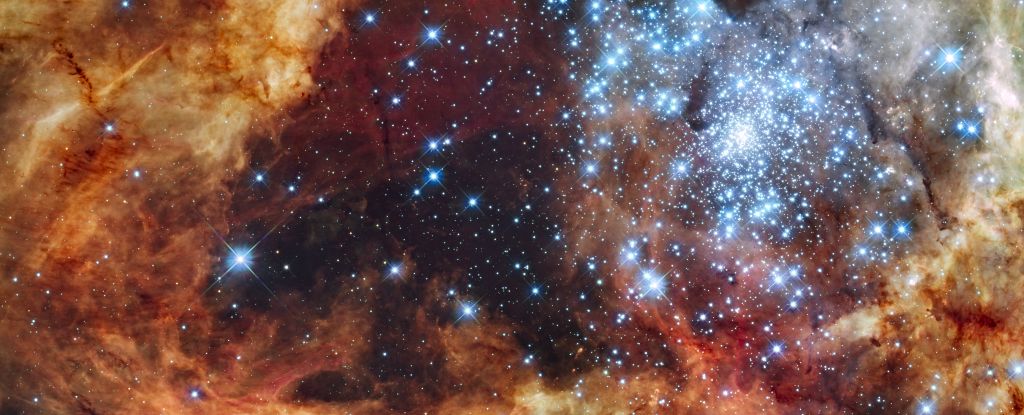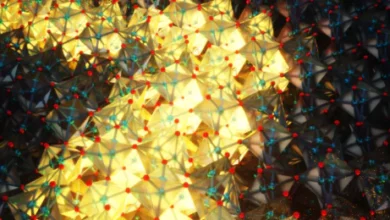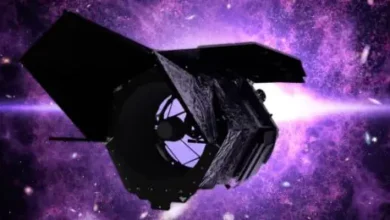
Biggest Star ever found reveals amazing new data
(ORDO NEWS) — How big can a star grow? It turns out that not as much as we imagined.
The clearest images ever taken of the largest known star show that the upper limit on the Sun’s mass is likely much smaller than previous estimates.
Initially, the mass of the star R136a1 was 250-320 times the mass of our Sun. According to new estimates, its mass is 150-230 times the mass of the Sun.
The new 200 solar mass figure still holds the heavyweight record for the star, but a downward revision to its mass could have deeper implications.
The work was carried out as part of a project to study the cluster in which it is located, called R136. It is located in the Tarantula Nebula, a star-forming hotbed in the Milky Way’s satellite galaxy called the Large Magellanic Cloud.
This cluster contains some of the most massive stars known; their masses have also been revised down. Because these masses are critical anchor points for the upper mass function of massive stars, this work may mean that our previous upper limits on stellar mass are wrong.
“Our results show us that the most massive star we currently know is not as massive as we previously thought,” says astronomer and astrophysicist Venu Kalari of the Gemini Observatory. “This suggests that the upper limit of stellar masses may also be smaller than previously thought.”
While we don’t know what the upper limit for stellar mass is, calculations and simulations show that it should be.
It is generally accepted that at a point known as the Eddington limit, the outward pressure from the radiation from the core exceeds the inward gravitational pressure, causing material in the star’s outer layers to be ejected.
Previous studies have set the Eddington limit at 150 solar masses. Then new data were obtained on the stars R136, and it turned out that the mass of a whole group of stars is much higher.
In addition to not fitting the Eddington limit, these stars - young, very hot, and very large - did not fit star formation models.
More recent research has shown that such chonkers can form from stellar mergers, but we still don’t have a good answer to the Eddington limit problem.
Establishing an upper mass limit based on precise reference points would solve this nagging puzzle to a large extent. Stellar mass can be calculated by taking accurate observations that show the brightness and temperature of a star.
Therefore, Kalari and his colleagues set about obtaining new, sharper images of the cluster in general and R136a1 in particular.
This gave the team the tools to determine a new mass of 196 solar masses (give or take a few tens of solar masses) for R136a1, and 151 and 155 solar masses for the cluster’s other two large stars, R136a2 and R136a3 - less than 195-211 and 180- 181 respectively.
This has implications for the production of heavy elements in the universe. You may know that massive stars end up as black holes; they eject their outer material, and a black hole is formed from the destroyed stellar core.
However, there is an upper limit to this: at about 130 solar masses, a star can explode in a so-called pair-instability supernova, where the entire star, core and everything else, explodes.
During these incredibly violent events, subatomic processes lead to the formation of heavy elements. If there are fewer stars in this mass range, then we need to reconsider the potential contribution of pairwise unstable supernovae to the production of heavy elements that we observe in space.
“The importance of the existence of pairwise unstable supernovae cannot be overemphasized, as just one pairwise unstable supernova from a star of 300 solar masses could produce and eject more metals into the interstellar medium than the entire stellar mass function below it, which would completely change our understanding of modeling galactic chemical evolution,” the researchers write in their paper.
However, this result was achieved at the cost of limiting the capabilities of the Zorro instrument on the Gemini South telescope, and the researchers urge caution in interpreting the results.
The next step will be to try to confirm the findings, perhaps by making and comparing observations with another instrument.
—
Online:
Contact us: [email protected]
Our Standards, Terms of Use: Standard Terms And Conditions.






